Monday, 27 October 2025
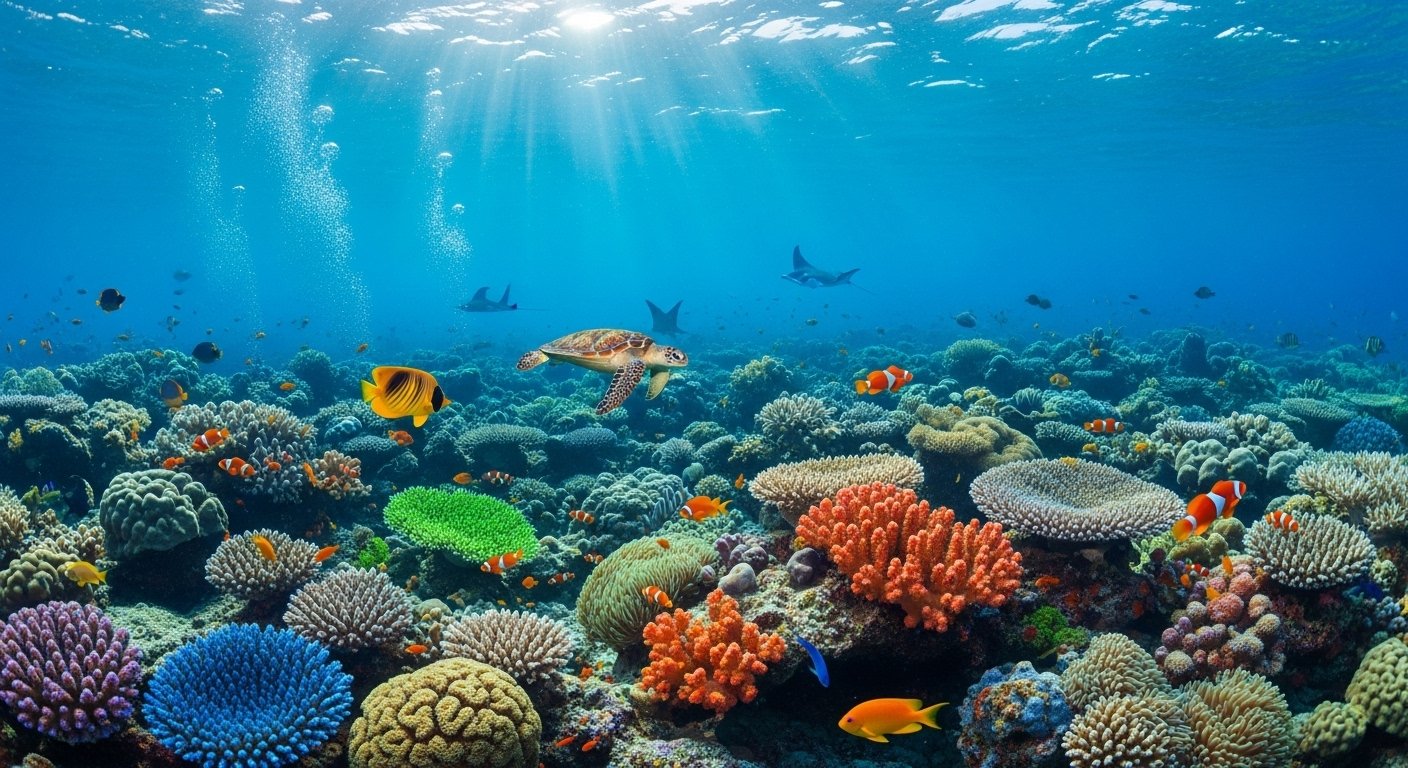
The traditional logic of reef conservation—protect the habitat, and the habitat will recover—is breaking down under the realities of a warming ocean. MPAs still matter, but they are being outpaced by global environmental change that local policies cannot contain. The future of coral reefs will depend on dynamic, data-driven management, active restoration, and financial mechanisms that treat reef health as essential climate-resilience infrastructure. In this new era, the question is not whether reefs can be protected—but how fast we can redesign the systems meant to save them.
For decades, the global conservation community placed its faith in marine protected areas (MPAs) as the primary shield for coral reef ecosystems. The theory was simple: Designate zones where fishing is curtailed, run-off is controlled, and coastal development is managed—and healthy coral systems will recover, thrive, and resist shocks. However, the fundamental logic of that model is now under grave pressure. As marine heatwaves grow in frequency, intensity and duration, and ocean chemistry shifts with acidification, the assumption that protection from local threats alone can ensure reef survival has proven increasingly inadequate.
“The speed of climate change is pushing coral reefs beyond the environmental boundaries they evolved to survive in. A reef functions much like an underwater city—dense, highly organized, and full of interdependent life. Corals rely on a narrow band of temperatures and water chemistry, and when waters warm, they expel their symbiotic algae, zooxanthellae, which provide most of their energy. Without that partnership, corals begin to starve, and pollution or disease can accelerate the decline. When corals die, the reef’s architecture breaks down, fish lose habitat, invertebrates lose food, and the ecosystem shifts into a simpler state with far less ecological function and economic value.
Reef restoration is advancing, from coral nurseries to selective breeding and assisted evolution. Some coral–algae partnerships show natural heat tolerance, and herbivore-rich reefs in the South Pacific have demonstrated surprising capacity to rebound. But the communities that return are not the same, and we are only beginning to understand the implications for fisheries, tourism, and coastal protection.”
— Camille Gaynus, Chief Science Officer, BIMS (Black in Marine Science)
Inside key reef systems—from the vast expanse of Australia’s Great Barrier Reef to the unique ecosystems of the Red Sea and the island-state reefs of the Seychelles—this truth is becoming ever more apparent. MPAs remain essential, but they are no longer sufficient. In this new era, reef resilience demands a fundamentally re-engineered approach: One that blends dynamic management, cutting-edge restoration, climate-smart zoning, real-time monitoring, and financial innovation. Equally, coral reef ecosystems must be woven into the climate-finance architecture—not simply as biodiversity assets, but as resilience infrastructure for coastal societies.
This article examines three intertwined themes. First, the limitations of the traditional MPA model in a climate-changed ocean. Second, the emergence of what we might call “climate-smart MPAs” that attempt to address the new stress regime. Third, the critical gap in global finance: reefs are largely excluded from blue-carbon frameworks despite their enormous value, and that must change if scaled resilience is to be achieved.
Why MPAs Are Failing in the Face of Global Stressors
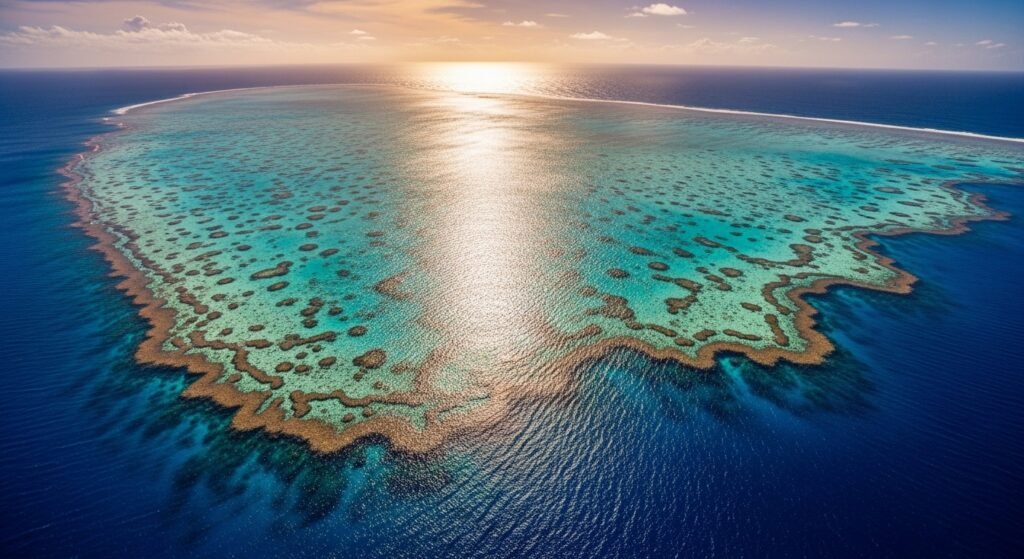
For much of the late twentieth and early twenty-first century, marine protected areas (MPAs) stood at the center of global coral reef conservation strategy. The theory behind them was straightforward: if reefs were shielded from local, human-driven pressures, their natural ecological resilience would give them the capacity to withstand shocks and regenerate over time.
The traditional MPA model focused on what were understood as the primary drivers of degradation: unsustainable and destructive fishing practices, nutrient and sediment runoff from agriculture and coastal development, and physical damage from tourism or dredging. In many cases, this approach worked. Where MPAs were institutionally strong—backed by enforcement, ecological monitoring, and community participation—indicators such as fish biomass, herbivore abundance, and coral recruitment showed measurable improvement. These reefs, free from chronic local stress, were able to maintain healthier ecological structure and clearer competitive balances, particularly the crucial balance between corals and macro-algae. In this sense, MPAs succeeded in delivering what they were designed to do.
” Coral reefs are one of the ecosystems that have been most devastated by climate range, with 14 per cent of the world’s coral dying from 2009 to 2018. Climate change has multiple impacts on coral reefs, including sea level rise, that brings sedimentation, stronger and more frequent storms that destroy reefs, changing precipitation patterns that bring increased runoff, freshwater and land pollutants, often causing algal blooms or infectious diseases, and altered ocean currents that can affect coral larval dispersal. But the biggest effects of climate change on coral reefs are increased ocean acidification and ocean warming, which lead to coral bleaching events.
However corals are resilient. Although right now 80 per cent + of world corals are in a mass bleaching event because the ocean is so warm, that does not mean that all of those corals are going to die. It means those corals are incredibly stressed, and their zooxanthellae (the photosynthetic organisms that live inside corals and give them food) have left the corals, leaving them vulnerable to starvation and disease.
But when the temperature goes down and the bleaching event is over, the zooxanthellae can return. The coral can survive. There are also pockets of coral that are surviving and adapting to these very hot temperatures, like in the Red Sea, where corals seem to be evolving to the hotter waters. And corals near cold upwelling waters from the deep seem to be surviving and then dispersing to farther reefs after heat wave events. Corals are in an incredibly vulnerable spot right now, but they are not doomed. “
— Jenni Brandon, PhD, Science and Sustainability Consultant, Wild Beacon Consulting
Yet in the past decade, the conservation narrative has shifted dramatically. The stressors now driving coral reef decline are no longer predominantly local; they are global, atmospheric, and systemic. Marine heatwaves have emerged as the most immediate and widespread threat. As oceans warm, corals expel the symbiotic algae (zooxanthellae) that give them both color and metabolic energy. The result is bleaching—an outwardly visible symptom of profound physiological stress.
Where heatwaves were once rare, today they are more frequent, more intense, and longer in duration, leaving insufficient time for reefs to recover between events. Ocean chemistry has also begun to turn against corals. As the ocean absorbs increasing amounts of atmospheric CO₂, its pH gradually drops. This process of acidification diminishes the availability of aragonite, a mineral corals need to build their calcium-carbonate skeletons. Even corals that survive bleaching events may struggle to rebuild structure, weakening reefs in the long term and reducing their capacity to provide habitat and shoreline protection.
“Mauritius has experienced multiple mass bleaching events over the past three decades, each revealing both vulnerability and resilience within its reef systems. The first major bleaching in 1998, during an exceptionally strong El Niño, caused widespread stress but relatively low coral mortality compared to neighboring Seychelles and Maldives. Local cooling from cyclonic activity helped buffer the reefs, though shallow, poorly flushed lagoons were significantly affected. Subsequent surveys in 2005 showed coral cover below 5 per cent at many sites, with nutrient pollution, algal overgrowth, and crown-of-thorns starfish driving further decline. However, some locations like Bel Ombre retained high coral cover and species diversity, illustrating the importance of site-specific conditions and local management.
During the global bleaching of 2016, Mauritius again saw widespread bleaching but limited mortality at monitored sites. Factors such as water circulation, herbivore populations, and depth played key roles in recovery potential. The most recent 2024 bleaching event underscores growing pressure, with regional data showing high rates of bleaching and mortality across the Western Indian Ocean. While comprehensive national assessments remain limited, these recurring events highlight the urgent need for sustained monitoring, improved wastewater management, reef restoration, and climate-adaptive marine protection strategies.”
— Anusha Devi Nawoor, PhD – Environmental Scientist, Tunley Environmental
Case studies from around the world echo this conclusion. The Great Barrier Reef, widely considered the gold standard of marine protection and monitoring, has suffered multiple mass-bleaching events in the past decade and recently recorded its worst coral loss in nearly four decades. These outcomes occurred despite comprehensive zoning systems, restrictions on fishing, and sustained management investment.
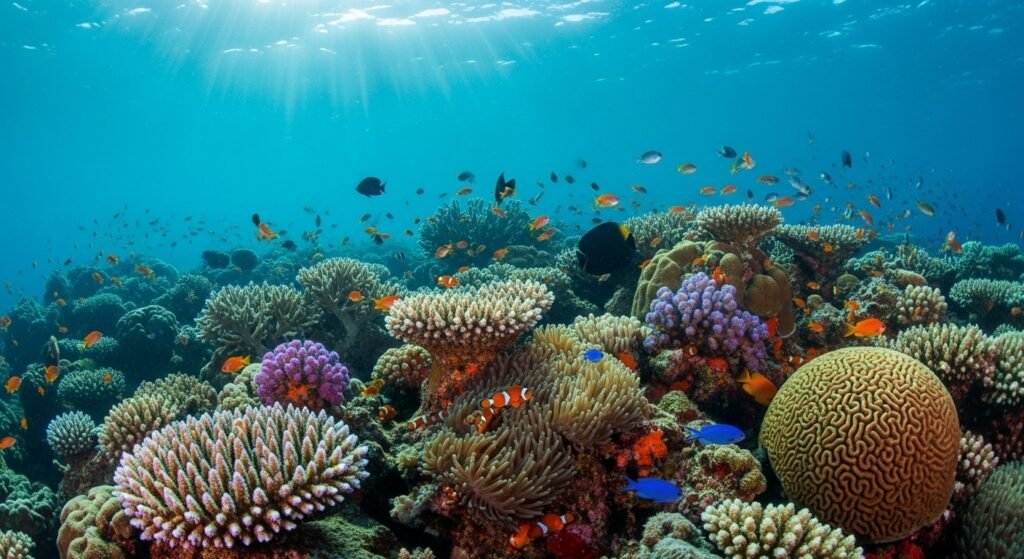
In the Red Sea, which has been viewed as a natural thermal refugia due to its unusually warm baseline conditions and the presence of heat-tolerant coral lineages, reefs are now beginning to show signs of climate-linked stress. The message here is not that the Red Sea is “safe,” but that even systems with higher inherent resistance face limits in a rapidly warming ocean.
In the Seychelles, long held up as a model for island-state marine governance, reef systems remain deeply vulnerable to bleaching and acidification despite sustained conservation commitments and the establishment of extensive MPAs. These national efforts have strengthened governance, protected fisheries, and improved local ecological conditions—yet none of these interventions can halt the rise in sea temperature or shift the chemistry of the global ocean.
Taken together, the pattern is undeniable. The MPA remains a critical conservation tool, but it is no longer sufficient as the foundation of reef survival strategy. It can control fishing pressure and pollution; it cannot control heat. It can restore ecological function; it cannot rewrite the physics of ocean-atmosphere carbon exchange. The challenge now is not to abandon MPAs, but to rethink what they are for, how they operate, and how they integrate into broader climate adaptation frameworks. The era of “protection alone” has ended. The era of “protection plus climate-resilience intervention” must begin.
Emergence of Climate-Smart MPAs
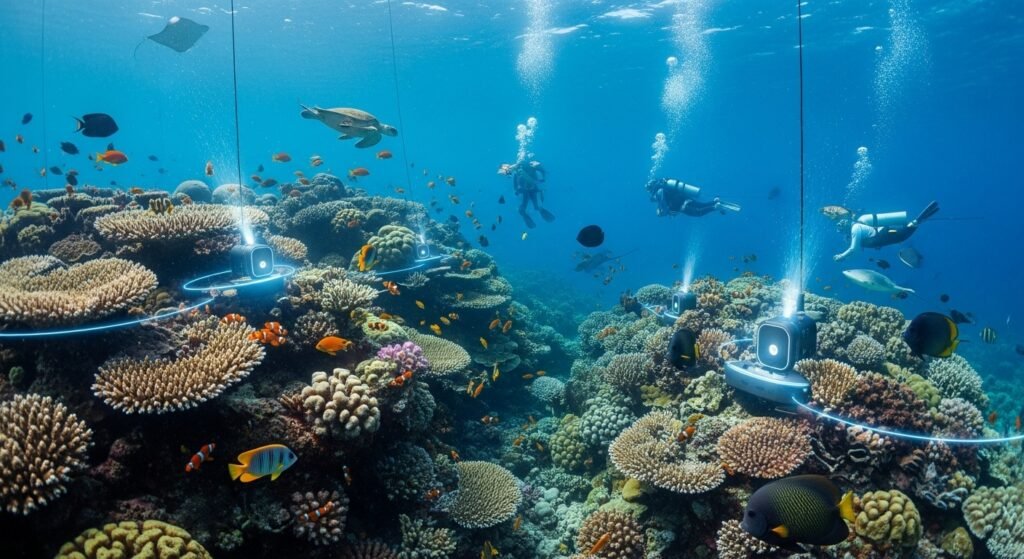
If the traditional model falters, what does the next generation of reef protection look like? Conservation practitioners, marine scientists and policy innovators are converging on a new paradigm we might call “climate-smart MPAs.” These have several defining features.
First, they adopt dynamic zoning and adaptive management rather than fixed boundaries and static rules. In a warming, acidifying ocean, it makes sense to manage based on real-time risk: closing regions temporarily during heatwave projections, prioritizing coral refuges, relocating species to cooler or deeper waters when viable. In essence, the MPA becomes a living, adaptive system, not a static map overlay.
Second, they integrate active resilience-reinforcement: restoration at scale, assisted evolution (breeding heat-tolerant coral strains), microbiome manipulation, artificial reef structures and shading technologies. In this model the MPA is not only a “do not touch” zone—it is a hub of intervention. Given the intensity of climate stress, passive protection alone is insufficient. Active adaptation is required. Restoration practitioners are now embedding interventions inside MPA frameworks to complement protection with adaptation.
Third, monitoring and technology become central. Climate-smart MPAs invest in satellite–drone–autonomous vehicle systems, AI image-analysis, heat-anomaly forecasting and rapid response capacity. This allows managers to anticipate threat windows, execute intervention strategies, and adapt governance accordingly. Without such capability, MPA management risks being reactive rather than proactive.
Fourth—and perhaps most critically—these next-gen MPAs are tied into financial and governance models aligned with climate-resilience outcomes. This means moving beyond donor-driven conservation budgets to resilience bonds, insurance-linked protection, private-sector risk sharing and credit flows tied to ecosystem services. In short, the reef becomes an asset class for coastal resilience.
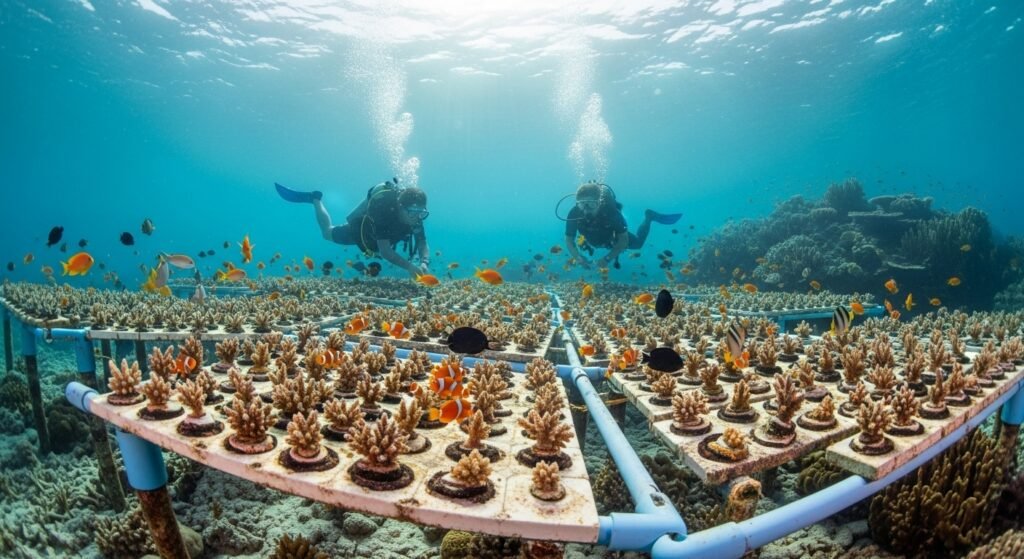
Some pioneering efforts hint at this shift. The Global Fund for Coral Reefs (under the World Bank/GEF umbrella) is exploring reef-plus financing models, integrating reef health with coastal-defense economics and tourism-risk mitigation. Island nations with tourism-dependent reefs (such as the Seychelles) are beginning to explore parametric insurance tied to reef condition. While these efforts are nascent, they mark the transition from protection-only to resilience-oriented financial design.
One of the key challenges remains prioritising within MPAs those reef systems that have the greatest chance of persisting—so-called climate refugia. These are reefs naturally exposed to cooler upwelling, shading, or adaptive coral strains. Protecting these first may offer higher bang-for-buck than attempting to protect all reefs equally. This shift requires sophisticated data analytics, modelling, and risk-mapping.
Policy: Where It’s Adapting—and Where It’s Stagnating
On the policy front, there is both movement and inertia. A growing number of national adaptation plans, especially among small island developing states (SIDS), now recognise coral reef resilience as a critical adaptation pathway. International bodies, including the United Nations Environment Programme (UNEP) and the International Coral Reef Initiative (ICRI), now emphasise reef protection within climate adaptation agendas.

Yet significant policy gaps endure. Many MPAs continue to be designed primarily for fishing-pressure reduction or pollution control—not thermal-stress mitigation or adaptive zoning. Institutional capacity in many reef nations remains weak, particularly for technical monitoring, dynamic governance or financial innovation. Perhaps most fundamentally, the global climate regime has no dedicated mechanism for reef protection—no reef-specific emissions target, no international reef insurance fund, no global carbon-market equivalency for reef resilience. In the absence of such mechanisms, MPAs remain dependent on national budgets or donor grants alone, limiting scale and innovation.
Some countries show flashes of policy innovation. The Seychelles, for instance, has piloted marine-resilience bonds and sustainable tourism-linked reef protection. In Australia, the management of the Great Barrier Reef has begun to incorporate resilience-based interventions and climate-risk forecasting. Still, these remain exceptions, not yet the norm.
A further policy bottleneck is the disconnect between conservation agencies and finance ministries. Reefs have long been viewed through a biodiversity lens rather than as climate-resilience infrastructure. This framing limits access to adaptation finance, risk‐finance instruments, and climate-resilience capital flows. Changing this framing is essential.
The Coral-Carbon Paradox: Why Reefs Are Missing from Blue Carbon Finance—and How That Can Change
In parallel to governance reform, there is a glaring gap in how coral reefs are treated within the climate-finance architecture. The concept of “blue carbon” has gained traction in recent years, describing the capacity of coastal and marine habitats to absorb and store CO₂—mangroves, seagrasses and tidal marshes being the primary beneficiaries. These ecosystems have measurable carbon stocks, standardised accounting methodologies, and thus meaningful access to carbon-finance instruments.

By contrast, coral reefs are largely absent from blue-carbon markets—and yet the logic for including them is compelling. Reefs provide vast ecosystem services: they support fisheries, protect coastlines from storm surge and erosion, undergird tourism economies and harbour biodiversity. Their failure imposes heavy social, economic and adaptation costs on coastal communities. So why haven’t they entered the carbon-finance agenda in any meaningful way?
The answer lies in several structural and technical impediments. First, reefs store comparatively little long-term organic carbon. Their skeletal calcium-carbonate structures do not translate easily into the carbon-sequestration units used in current carbon markets. As one ecosystem-finance review notes: “Limited evidence is hindering uptake and progress” of blue-carbon schemes for non-traditional habitats.
Second, the vulnerability and high risk of reef decline make them unattractive as long-term assets for investors. Third, policy definitions of blue carbon rarely include reef habitats, so the institutional pathways for finance are largely closed.

Yet the time is right for change. If we shift the metric from pure carbon-storage to resilience value, reefs merit serious inclusion. Reefs reduce wave energy, limit coastal erosion, support fisheries and tourism livelihoods—all of which have measurable economic value. The emerging field of parametric insurance for reefs—linking reef health to payouts after storm events—is one frontier. Another is biodiversity-credit systems coupling conservation outcomes with finance.
For global institutions such as the International Monetary Fund (IMF) and the World Bank, the opportunity is two-fold. First, they can catalyse reef-resilience finance by underwriting pilot instruments, setting standards, and integrating reef metrics into adaptation funding. Second, they can shift national budgeting paradigms—treating reef health as climate-adaptation infrastructure rather than discretionary conservation. Doing so unlocks funding, elevates reef protection in national priorities, and draws in risk-capital.
Toward a Resilient Future for Coral Reefs
Re-designing reef management and finance for the climate-era means doing several things concurrently. We must actively identify and protect climate-refugia reefs—those naturally more resistant to heat stress or acidification—and prioritise them for interventions. We must equip MPAs with the technical capacity, real-time monitoring and adaptive governance necessary to anticipate and respond to heatwaves, bleaching events and acidification pulses. We must expand restoration and assisted-evolution tools: transplanting resilient strains, manipulating symbionts, deploying artificial reef frameworks and experimenting with shading or cooling technologies.

From a finance and policy perspective, the shift is equally urgent. Reefs must enter the adaptation finance agenda, not just the conservation agenda. Carbon-finance definitions must evolve to resilience-finance definitions, making reef health a measurable asset. Incentives need to shift: tourism operators, insurers, coastal developers and governments all benefit from healthy reefs—so they should help pay for them. Multilateral institutions must create frameworks for reef-linked resilience bonds, parametric reef insurance, biodiversity credits and adaptation trusts.
Finally—and critically—none of this will succeed if global greenhouse-gas emissions continue to rise unchecked. The best-designed MPAs, the most sophisticated monitoring systems, the most resilient coral strains will still collapse under the weight of relentless warming. A recent mapping study warns that reef futures are “intrinsically tied to global emission trajectories.” Local action buys time—but it does not buy immunity.
Conclusion
Coral reefs were once assumed to be savable with well-designed marine parks, strong fisheries management and clean-water regulation. In a warming, acidifying ocean, that assumption is no longer sufficient. The model of “protect and leave alone” must give way to “protect, adapt and finance.” MPAs should evolve into climate-smart hubs of resilience. Reefs should be reframed not simply as biodiversity-treasures, but as critical infrastructure for coastal protection, food security and climate adaptation. Reef resilience must be embedded within the climate-finance system—bridging conservation budgets and adaptation capital, drawing private and public investment into the blue economy.
The path ahead is formidable. But the choice is stark: evolve the model—or let thousands of reef systems crumble under the tide of climate change. For the millions who depend on them for food, income, and coastal protection, there is no other option.
— Suchetana Choudhury (suchetana.choudhuri@agrospectrumindia.com)